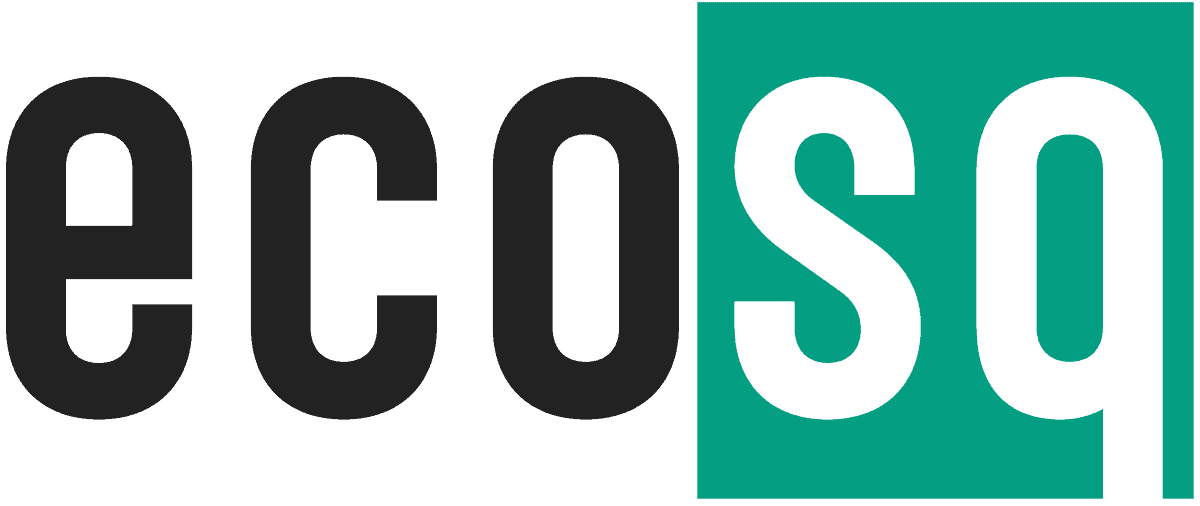The Complete Guide to Open Source Sustainable Fashion Tools
This article was previously published in our newsletter. The content may no longer be up to date.
Sustainable and ethical fashion is a growing trend, as consumers become more aware of the environmental impacts of fast fashion. Open source tools provide an innovative way for fashion brands and designers to embrace sustainability. This comprehensive guide explores the world of open source fashion tools and how they are revolutionizing eco-friendly clothing production.
Overview of Sustainable Fashion
The fashion industry is the second largest polluter globally, next to the oil industry. However, in recent years, fashion brands have started recognizing the need for sustainable practices. This rising awareness has led to the emergence of terms like:
- Sustainable fashion – Focuses on environmentally-friendly production methods and social responsibility
- Ethical fashion – Emphasizes fair treatment of workers and animals
- Eco fashion – Uses eco-friendly materials and production processes
- Slow fashion – Favors quality construction and timeless designs over fast fashion
Key principles of sustainable fashion include:
- Local and ethical manufacturing
- Use of eco-friendly, natural, recycled materials
- Optimization of supply chains for efficiency
- Fair wages and good working conditions
- Animal welfare and vegan materials
- Waste reduction across production and packaging
- Transparency across supply chains
Adopting sustainable practices requires fashion brands to rethink traditional clothing design and production methods. This is where open source tools come in.
Benefits of Using Open Source Sustainable Fashion Tools
Open source fashion tools align closely with the goals of sustainable fashion. They provide the following advantages:
- Reduced material waste – Tools optimize pattern layout and fabric cutting to minimize waste
- Lower environmental impact – Virtual prototyping reduces samples and transportation emissions
- Supply chain transparency – Blockchain and data sharing enhances transparency
- Ethical labor practices – Local production supported by open source reduces unethical outsourcing
- Accessibility – Open source communities enable knowledge sharing for sustainable practices
- Innovation – Collaborative ecosystems drive new solutions for eco-fashion
Now let’s explore some of the key open source technologies transforming sustainable fashion.
Open Source 3D Modeling for Sustainable Design
3D modeling tools allow designers to create digital prototypes of clothing. This facilitates sustainability by:
- Reducing the need for physical samples and transportation emissions
- Optimizing designs virtually to reduce waste before production
- Visualizing sustainable materials on digital prototypes
Some popular open source 3D modeling tools include:
Blender
Blender is a free, open source 3D graphics software used for 3D modeling, animation, simulation and more. Key features include:
- Powerful 3D modeling and texturing tools
- Physics engine for simulating fabric, lighting, and movement
- Support for virtual reality projects
- Integrated animation and rigging tools
- Graphic design capabilities like video editing and compositing
It enables designers to model 3D clothing digitally and visualize different sustainable materials like organic cotton, hemp, etc. The physics engine allows simulation of how fabrics will drape and move.
Marvelous Designer
This 3D design tool focuses specifically on clothing modeling and simulation. It offers:
- Advanced tools for 3D garment construction
- Fabric simulation for realistic visualization and testing
- Patterns automatically generated from 3D models
- Library of customizable fabrics, textures, and physical properties
The fabric simulation technology is powerful for digitally testing and optimizing sustainable textiles. The generated patterns can be exported for eco-friendly production.
CLO 3D
CLO (Cloth Simulation) 3D is a dedicated 3D clothing design system. Features include:
- 3D garment drafting, draping and visualization
- Fabric simulation engine
- Pattern flattening, grading, and marker layout tools
- Digital asset management for designs and materials
It facilitates virtual prototyping of garments with eco-friendly fabrics. The pattern layout tools minimize material waste. Assets like sustainable fabrics can be reused across designs.
Sustainable Pattern Design and Cutting Software
Efficient pattern design and fabric cutting software reduces textile waste in production. Some open source tools for sustainable pattern making include:
Valentina
This free fashion design software offers:
- Pattern drafting tools for sketches, grading, and adjustments
- Marker making for optimal fabric layouts to minimize waste
- Support for digital and plotted pattern printing
- Libraries of reusable design assets and patterns
It enables streamlined pattern design coordinated with eco-friendly cutting layouts. The digital capabilities reduce paper waste.
Lectra Modaris and Cutting Room
Lectra provides end-to-end fashion product development solutions. Their key tools include:
- Modaris – Pattern drafting, grading, and marker making software
- Cutting Room – Fabric optimization and cutting solutions
Together these technologies minimize fabric waste during cutting by optimizing pattern layouts. They support sustainable production workflows.
Optitex PDS
Optitex PDS offers 3D virtual prototyping along with advanced nesting and cutting tools. Key highlights:
- 3D design and simulation for virtual samples
- Nesting algorithms optimize fabric usage
- Markers support cutting of sustainable fabrics
- Integration with CNC cutting equipment
By integrating 3D design with nesting and cutting, it reduces textile waste throughout the design to production process.
Blockchain for Supply Chain Transparency
Blockchain technology enables fashion brands to track the full lifecycle of products from raw materials to finished garments. This brings radical transparency across complex supply chains.
Some ways blockchain enables sustainable fashion include:
- Tracing origins of cotton, wool, leather, and other raw materials
- Monitoring ethical treatment of workers at each production stage
- Authenticating organic or fair trade certifications on materials
- Tracking transportation emissions across supply chain logistics
Here are a few open source blockchain projects for fashion:
Fashion Revolution’s Fashion Open Studio
This platform uses blockchain and radio-frequency identification (RFID) to track clothing manufacturing. Key features:
- Documents supply chains from raw materials to the final buyer
- Provides transparency into worker conditions and fair wages
- Authenticates sustainability claims using blockchain verification
- Allows consumers to scan clothing with a smartphone to see its full history
TextileGenesis
TextileGenesis offers an open source blockchain for sustainable textiles. It enables:
- Material certification and compliance data to be immutably tracked
- Smart tracing of recycled fibers and ethical virgin materials
- Integration of IoT sensors across supply chains for real-time data
- Automated sustainability reports and audits for transparency
This infrastructure brings next-level visibility across textile supply chains via blockchain.
Open Source Hardware for Sustainable Production
Open source hardware innovations are making fashion manufacturing more efficient, localized, and eco-friendly. Some examples:
Industrial Knitting Machines
Open source knitting machines like Kniterate enable localized production of garments and textiles. Benefits include:
- Reduced shipping and emissions from re-localizing manufacturing
- On-demand production to match demand, thereby reducing waste
- Ability to use sustainable fibers and monitor working conditions
- Knitted construction generates less fabric waste vs woven fabrics
Laser Cutters
Open source laser cutters can be integrated with sustainable pattern marker software for zero-waste cutting. For example:
- Cutters like Lasersaur work with digital pattern files for precision cutting
- No fabric waste from inaccurate manual cutting
- Lasercut recycled felt and other sustainable fabrics
- Enable localized production and customization
3D Printers
3D printing with sustainable biopolymers is an emerging eco-friendly production method. Benefits include:
- Additive manufacturing generates zero textile waste
- Ability to locally print-on-demand vs mass production
- Novel use of recycled plastics, cellulose, algae, and other eco materials
- Combined with 3D design software for zero waste workflows
Open Source Fashion Communities
Collaborative communities are driving open source tool development and knowledge sharing around sustainable fashion.
Fashion Hackathons
Hackathons bring together fashion, technology, and sustainability advocates to ideate solutions. For example:
- Teams collaborate on open source projects over 24-48 hours
- Developers, designers, engineers, and entrepreneurs participate
- Events like Global Fashion Battle promote sustainability
- Winning solutions are often open sourced for public benefit
Hackathons generate ideas, tools, and momentum around ethical fashion.
Fab Labs
Fab labs provide open access to digital fabrication tools for localized production of clothing or accessories. They enable:
- Community use of open source technologies like 3D printers, laser cutters, CNC machines, knitting machines etc.
- Education and training on digitally-driven ethical manufacturing
- Startups to prototype sustainable products using shared tools
- Reskilling local workforces for decentralized sustainable fashion jobs
Wikifashion
Wikifashion is an open knowledge sharing platform aiming to democratize sustainable fashion. It offers:
- Wiki-style platform for collaboratively developing open “how to” guides
- Open source product designs, processes, and best practices
- Global community of fashion professionals and amateurs
- Resources for transitioning to ethical and eco-conscious design
Democratized access to sustainable fashion knowledge enables collective innovation towards an eco-friendly industry.
Real-World Examples of Open Source Sustainable Fashion
Increasingly, fashion brands are embracing open source tools and practices to transform their environmental sustainability. Some pioneering examples include:
Wikihouse Fashion Studio
Architecture firm Wikihouse partnered with fashion designer Mary Lempriere to create an open source sustainable fashion studio powered by digital fabrication. It features:
- 3D printed fashion forms for virtual prototyping
- CNC machines for zero-waste pattern cutting
- Laser cutter for leather and textile fabrication
- Open source traction system for natural dyeing
- Hackerspace for classes and community workshops
By sharing open source technologies and knowledge, they aim to build a circular fashion ecosystem.
Ten Tree Using CLO 3D and 3D Printing
Canadian clothing brand Ten Tree uses CLO 3D design software and 3D printing to create sustainable apparel. Benefits include:
- Each design iterated virtually using CLO before production
- 3D printing used for design prototypes and custom hardware
- Reduced sampling and waste with digital prototyping
- Ability to visualize eco-fabrics like hemp, organic cotton, and recycled polyester
- Efficient pattern layouts to minimize fabric waste
Fashion for Good Scaling Laser Cutting
Fashion for Good, an accelerator focused on sustainable innovation, invested in Green Theme Technologies to scale their laser cutting solution. It enables:
- Automated cutting directly from digital pattern data
- Zero fabric waste compared to manual cutting
- Works with organic fabrics like linen, cotton, and silk
- decentralized, localized production model
They aim to transform sustainable production across India and Southeast Asia.
Key Challenges for Mainstream Adoption
Despite exciting progress, open source fashion tech still faces barriers to mainstream adoption. Some key challenges include:
- Perceived lack of security – Brands worry about protecting designs and IP with open technologies
- No standards – Absence of common standards makes integrating tools tricky
- Initial investment required – New software and equipment represents a cost and learning curve
- Limited awareness – Many brands still unaware of open source options
- Fragmented communities – Open groups are dispersed and need more cohesion
However, the benefits clearly outweigh the growing pains. Momentum is building around collaboratively overcoming these challenges.
The Future of Open Source Sustainable Fashion
The intersection of ethical fashion and open source is a fast-evolving space. Some interesting directions for the future include:
- AI-driven design and production – AI could optimize everything from designers to self-learning manufacturing robots
- Distributed manufacturing – Production could shift to hyperlocal micro-factories for on-demand personalization
- Advanced material innovations – Things like programmable fibers made from bioengineered microbes
- Circular shopping experiences – AR/VR could allow personalized digital wardrobes, reducing waste and overconsumption
- Progressive policies – Governments introducing stronger regulations around sustainability and labor ethics
Sustainable fashion powered by open source has the potential to profoundly reshape the industry as we know it.
Key Takeaways
- Open source tools enable the principles of sustainable fashion – waste reduction, transparency, ethics, accessibility etc.
- 3D design software, pattern making tools, blockchain tracking etc. are revolutionizing eco-friendly clothing production.
- Communities like Wikihouse Fashion Studio and brands like TenTree leverage open tech for sustainability.
- Challenges remain around adoption, but momentum is building through collaborations.
- The future points to distributed manufacturing, AI-driven solutions, biotech materials, and policies advancing circularity and ethics.
Conclusion
The urgent need for sustainability is driving fashion’s transformation. Open source technologies provide tools for fashion to leapfrog into an eco-conscious circular production model. By embracing open source communities, brands can access knowledge and innovations for creating stylish designs with minimal environmental harm. Ultimately, fashion can become a powerful force for good through open technologies that align creativity with ecological stewardship.






